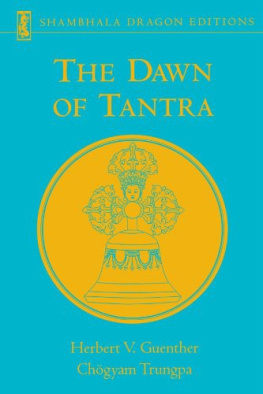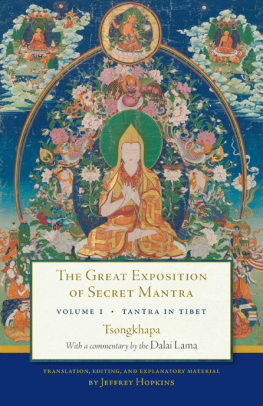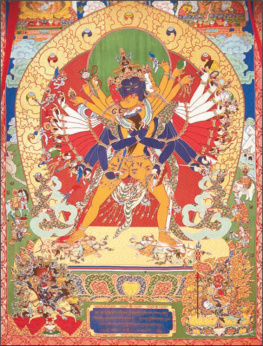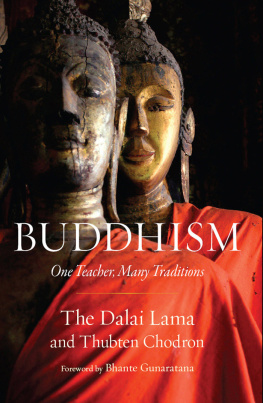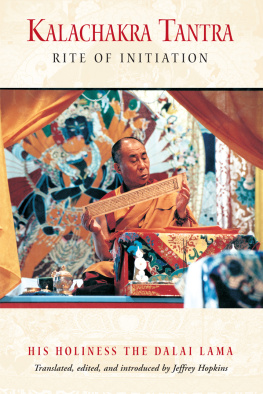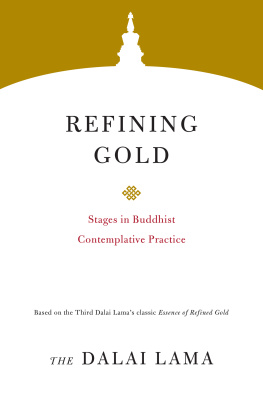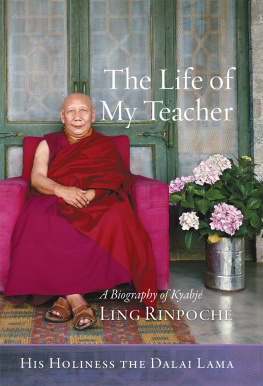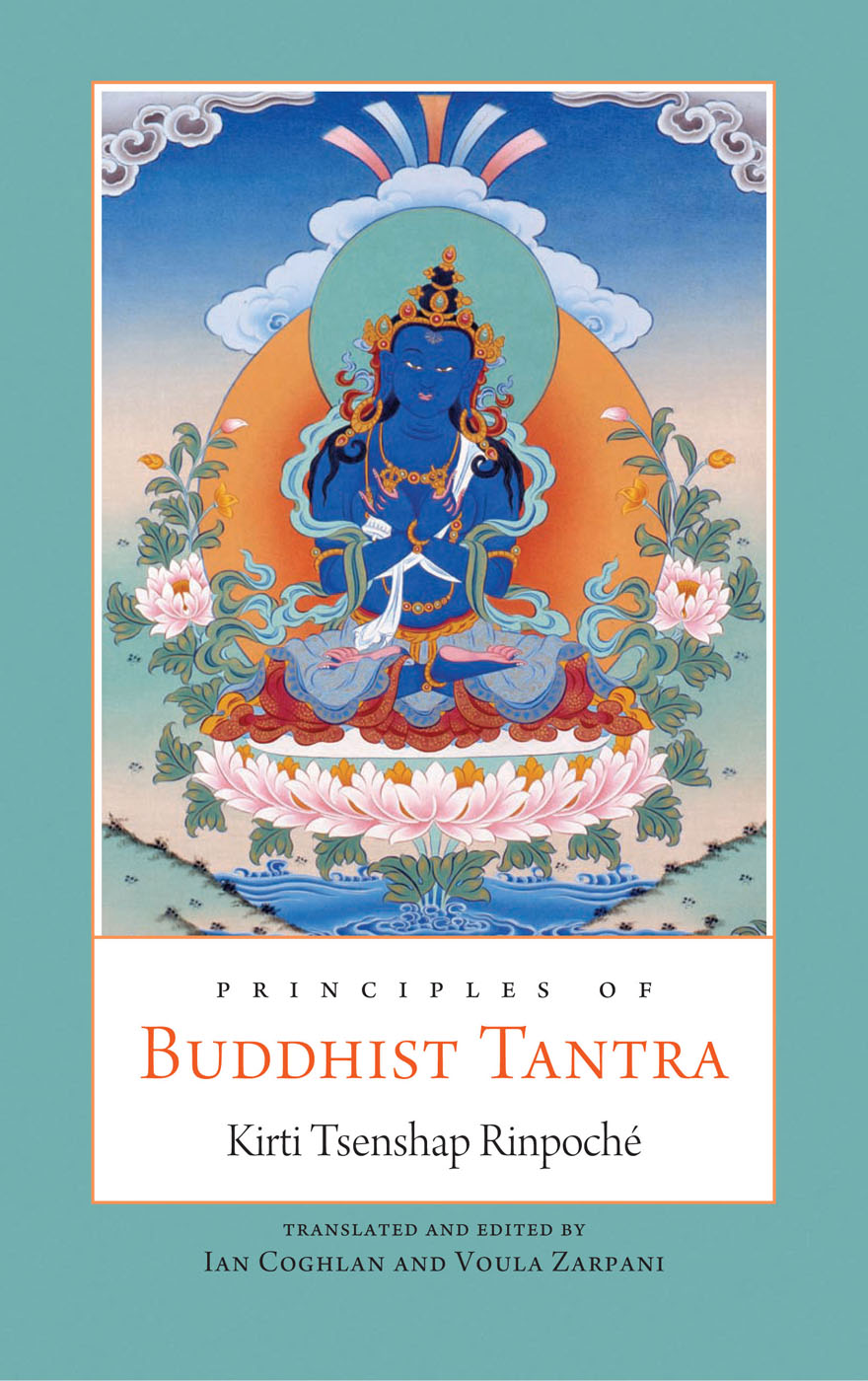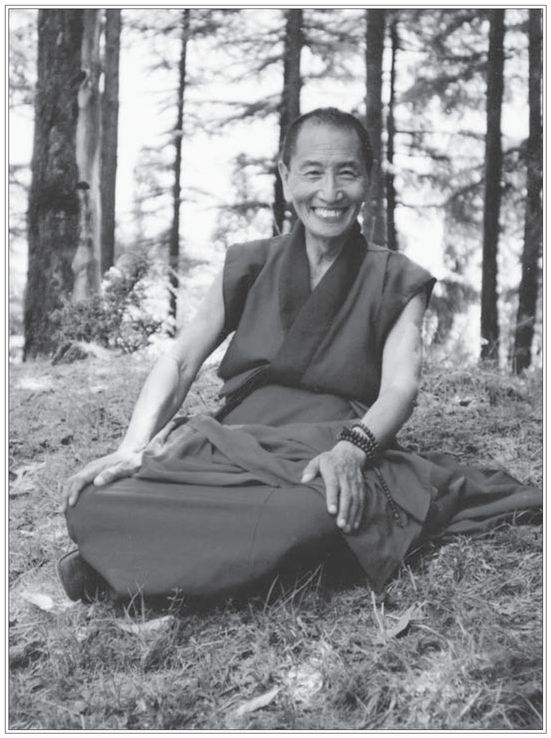Table of Contents
Kirti Tsenshap Rinpoch, circa 1993, Dharamsala, India. Photo by Andrea Antonietti.
Translators Introduction
Tantra is the hallmark of Tibetan Buddhism. While it is ostensibly an esoteric practice suitable for only a tiny elect, in practical terms, it has come to inform every aspect of the tradition. Images of meditational deities dominate Buddhist temples, and the special protocol of the relationship between vajra master and disciple holds in even nontantric contexts. Tantric empowerments are given regularly to large assemblies. However, many who have received such empowerments have only a dim notion of the practices and vows that are incumbent on a tantric initiate. Thus, there is a great need for clear and reliable information on this complex but fundamental set of practices.
This work contains a translation of Illumination of the Tantric Tradition: The Principles of the Grounds and Paths of the Four Great Secret Classes of Tantra by the nineteenth-century Mongolian lama Chj Ngawang Palden along with a contemporary commentary on that text by the late Kirti Tsenshap Rinpoch (19262006) drawn from oral teachings he delivered in California. Ngawang Paldens colloquial style makes this work well suited for an introduction, and in fact his text is frequently used as such in the curriculum of Geluk monasteries. Kirti Tsenshap Rinpoch was one of the foremost interpreters of Tibetan tantra teaching in the West, and he served also as a Klacakra guru to His Holiness the Dalai Lama.
The term
tantra implies a thread connecting the past to the future and thus an unbroken continuum. In the highest sense Buddhist tantra refers to the continuum of the extremely subtle clear-light mind that all beings possess, the methods by which this mind is purified and transformed into the path of enlightenment, and the transmission of the four classes of secret mantra that explain these methods. Buddhist tantra presents a profound reinterpretation of the mode of practice of the standard Buddhist path. Chj Ngawang Palden states:
In general our Master (kyamuni Buddha) taught three types of conduct: (1) the nonattachment of the Lesser Vehicle for those who are inclined to lesser practices, (2) the perfections of the Perfection Vehicle for those who are inclined to great and extensive practices, and (3) the dharmas of attachment of the four tantric divisions of secret mantra for those disciples who are fully inclined to profound practices.
The three vehicles are not differentiated by view, for each is fully grounded in the reality of the four rya, or noble, truths, where the third truthcessationrefers to emptiness and the fourth truththe pathrefers to the means of realizing emptiness, the supreme method for purifying the mind. The three vehicles are instead differentiated by the motivation and inclination of those who enter these vehicles. Those attracted to nonattachment enter the Hearer Vehicle (rvakayna) and engage in limited or select practices to accomplish the enlightenment of a limited number of beings. Those attracted to the perfections enter the Perfection Vehicle (Pramityna) and engage in great and extensive exoteric practices to accomplish highest enlightenment for all beings. Those attracted to profound practices enter the Tantric Vehicle (Tantrayna, or Vajrayna) and utilize afflictive emotions such as attachment in order to swiftly accomplish highest enlightenment at the deepest and subtlest level.
Tantra transforms the naturally occurring, ordinary processes of death, intermediate state, and rebirth into the four buddha bodies (kyas). It uses yogic practices to gain control over the subtle physical body represented by the channels, winds, and drops in order to fully purify the extremely subtle wind and mind, eliminate the two obscurations, and thereby attain enlightenment. Tantra is profound due to its skillful techniques for tapping into the subtle and extremely subtle states that form the basis of sentient existence. These methods are not revealed in the stras.
CHJ NGAWANG PALDEN
Chj Ngawang Palden, the author of Illumination of the Tantric Tradition , was born in 1797 in the region of Ulaanbaatar in Mongolia, a great monastic center where thousands of monks studied the texts of the three great Tibetan Geluk monasteries. His special qualities were recognized early, and he soon began an intensive program of study. At nineteen he entered Tashi Chpel College and at thirty-five successfully completed his kachu examinations. Three years later, in 1836, he was appointed chj, or preceptor, of Khur (Ulaanbaatar), and as preceptor he visited Tibet in 1843 in connection with the death of the Fifth Kalka Rinpoch. Then, in 1847, eleven years after becoming preceptor, he resigned to concentrate on composing texts.
During his life Ngawang Palden composed nearly one hundred works, including Annotations to the Great Presentation of Tenets (Grub mtha chen moi mchan grel), commentaries on the classical Indian treatises Abhisamaylakra and Madhyamakvatra, as well as Celebration of the Clear Mind (Blo gsal dga ston), an explanation of the debate manuals of Gomang and Loseling colleges of Drepung Monastery. He composed Illumination of the Tantric Tradition in the year of the monkey (1848), when he was fifty-two.
ILLUMINATION OF THE TANTRIC TRADITION
Illumination of the Tantric Tradition explains the basic structure of the tantric path and the way a practitioner of tantra may progress to higher levels of realization within the mantric vehicle. As the title implies this work seeks to shed light on the tradition of tantra. Tibet received the Sanskrit tradition of Indian Buddhism in three parts: the monastic discipline of the Mlasaravstivda sect, the Mahyna teachings on bodhisattva activity and the perfection of wisdom, and the corpus of teachings on tantra, or secret mantra. Unlike the other regions where Mahyna Buddhism spread, Tibet received the complete transmission of all four classes of secret mantra. The dissemination of the tantric tradition took many centuriesbetween Buddhisms advent in Tibet in the eighth century and the disappearance of Buddhism in India in the fourteenth centuryand involved both Tibetan scholars and translators traveling to India to train with Indian masters and Indian masters visiting Tibet to teach. After Buddhisms decline in India, the remote and isolated Tibetan plateau remained a haven and resource for the Indian Buddhist traditions of both stra and tantra. But the genius of the Tibetan intellect also supplemented this heritage with its own philosophical and esoteric contributions. The tantric tradition flourished in Tibet until the Communist revolution in China forced many Tibetan masters into exile in India and subsequently into contact with the modern world.
This text is subtitled The Principles of the Grounds and Paths of the Four Great Secret Classes of Tantra (Gsang chen rgyud sde bzhii sa lam gyi rnam gzhag). Therefore it belongs to the grounds and paths (sa lam) genre, which charts the structure of the path to enlightenment. In general the term


